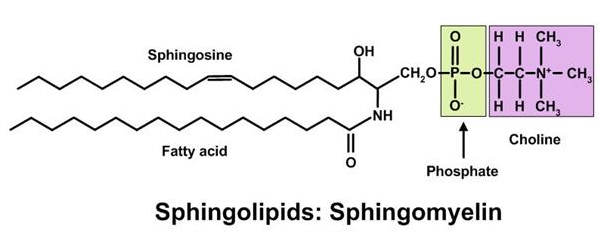Neimann-Pick disease - The Reversal of Growth Disorder
Growth is one of the most interesting natural marvels that we observe on a daily basis. It shows us vitality and progression. But imagine someone who gradually regresses in growth. How excruciating would that be? Imagine slowly losing your abilities and skills until you’re nothing but a grown babbling baby!
This is the fate of the unfortunate souls who suffer from Neimann-Pick disease - a metabolic ,autosomal recessive disorder which is caused by accumulation of sphingomyelin.
This disease was discovered by Albert Neimann, a German paediatrician and Ludwig Pick, a German Pathologist.
To understand the basic problem with this disease, we just have to understand the culprit that causes them.
Lipids are biologically important compounds which are relatively insoluble in water and have various functions such as storage, insulation, regulation etc.
Depending on the functional groups attached to them lipids are classified into various types. If the lipid has a fictional phosphate group, it’s known as a phospholipid. Sphingomyelin is a phospholipid and it looks like this.
If you carefully look at the diagram, there are four parts to this molecule:
- sphingosine
- fatty acid
- phosphate group and
- choline group.
In order to form sphingomyelin, sphingosine and fatty acid are put together to form Ceramide in the endoplasmic reticulum. Ceramide is then transferred to the Golgi apparatus to where the phosphate and choline groups are added to form sphingomyelin. Now the subsequent breakdown of Sphingomyelin is catalysed by the enzyme Sphingomyelinase which is coded for, by the SMPD1 gene.
When there is defect in SMPD1 gene, there is deficiency in the activity of sphingomyelinase. This causes defect in breakdown of sphingomyelin leading to its accumulation. This disease comes under a subgroup of lipid storage disorders called Sphingolipidoses.
Its accumulation causes complications in various organs. Accumulation in lysosomes of monocyte macrophage system interferes with the activity of macrophages of clearing out the phagocytosed substances. It leads to liver and spleen enlargement (Hepatospenomegaly). In bones it leads to enlarged bone marrow cavities. Muscles undergo Gelastic Cataplexy (sudden loss of muscle tone).
Child with Niemann-Pick Disease
Accumulation of sphingomyelin in the Central Nervous System causes progressive obstruction of various metabolic pathways.
This results in neurodegenerative complications ,which is the reason for delayed developmental milestones.
As it is an autosomal recessive disorder, the only possible treatment is to treat the symptoms. Statins are used to prevent excessive lipid synthesis, blood transfusions may be required in case of bleeding. Gene therapy and enzyme replacement therapies are possible but are far fetched.
The disorder of a particular enzyme, causing such severe after effects, is quite shocking. It only stresses more on the intricate design of the human body. It only makes us wonder as to how many more surprises does this Pandora box contain?


